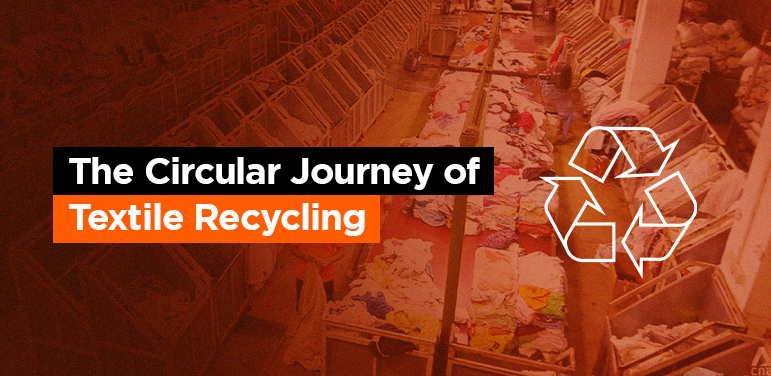DÜSSELDORF, GERMANY – Following four highly impactful days, Tarasafe International Pvt Ltd concluded its participation in AplusA 2025, marking its most successful exhibition in its long history with the esteemed event. The fair served as the ceremonial launchpad for a comprehensively reimagined brand identity and a revolutionary suite of flame-resistant (FR) protective solutions. The Evolution …
Read More
The Circular Journey of Textile Recycling
Why Recycle Textiles? The textile industry is a major contributor to global environmental pollution, affecting land, air, and marine ecosystems. The processes involved in apparel manufacturing chain significantly impact greenhouse gas (GHG) emissions in addition to water resources depletion. Of the 37.4 billion MT global CO2 emissions in 2023, roughly 1.2 billion MT were attributed …
Read More
Boosting Comfort & Thermal Protection with Layered Fabric Technology
When it comes to protective clothing for high-risk industries, such as firefighting or electrical work, the balance between safety and comfort is crucial. Protection and comfort are, however, contradictory properties especially in the case of heat and flame protective clothing. There is a need to strike a balance between the garment’s heat and flame resistance …
Read More
Variation in Arc-Flash Test Results
Introduction Understanding the effects of test setups and material testing parameters on arc flash results is vital for ensuring the safety of workers exposed to electrical hazards. The variability in heat transfer processes during arc flash events can significantly influence the arc ratings of personal protective equipment (PPE). This blog explores how different testing conditions …
Read More
Benefits of Layering While Using FR Protective Clothing
Does it make good sense to use multiple layers of FR garments to protect against exposure to industrial heat and flame hazards, similar to the layering approach used in outdoor cold, rain & wind protective clothing? We will try to find out an answer to the above question in this blog. While it is a …
Read More
BCI’s Role in Revolutionizing Sustainable Cotton Farming
Better Cotton is the world’s leading sustainability initiative for cotton. The Better Cotton Initiative (BCI) is a global non-profit organization that aims to make cotton production more sustainable by addressing environmental, social, and economic challenges associated with conventional cotton farming. It was founded in 2005 with the support of some visionary organizations such as Adidas, …
Read More
Tarasafe Unleashes Innovative Safety Solutions at A+A 2023
Delighted to share that we made a significant impact at A+A 2023 held from October 24 to 27 in Düsseldorf, Germany. Aplus 2023 event’s theme, “Inspirations for a Better Work Environment,” was in perfect alignment with our mission of ensuring workplace safety and health. Our presence exemplified its commitment to promoting sustainable safety and health …
Read More
Do emblems and decorations on flame-resistant clothing need to be flame resistant?
Flame-resistant clothing (FRC) is crucial for protecting individuals working in high-risk environments involving fire and heat hazards. FRC is designed to resist ignition, self-extinguish, and minimize burn injuries. Specific emblems & decorations like embroidery, heat transfer etc. may be used on the FRC for representation of company logos, norms that the garments meet or any …
Read More
The Evolving Landscape of Women’s PPE
Personal Protective equipments reduce the risk of getting harmed during an accident at work place. PPE are the essential requisite for everyone who work in a hazardous environment. The world has seen a rapid growth of women workforce across all industries. An increased awareness towards stringent regulatory compliances and realization of increased hazards at the …
Read More
The Advantages of Cotton-Hemp Blend Fabric for Eco-Friendly and Lasting Apparel
Researchers and inventors are being inspired by the widespread acceptance of slow fashion to create lasting, eco-friendly apparel. There are several possibilities, including fabric made of organic cotton, hemp, and bamboo. The front-runners in the market for fabric are clearly hemp and cotton. The crop and fibre plant known as cotton is well known. When …
Read More
